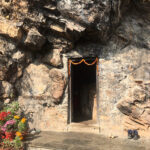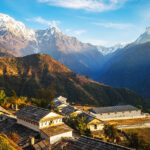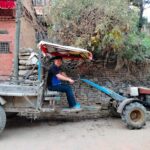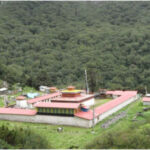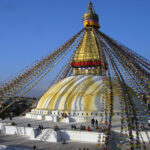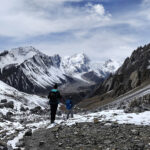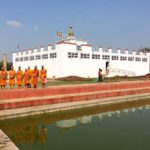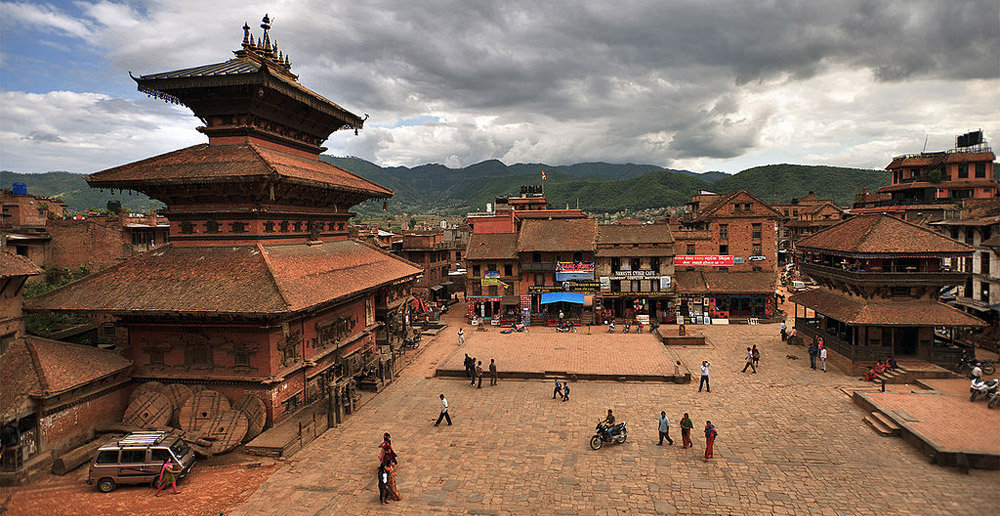
UNESCO World Heritage Sites in Nepal
Nepal, a country steeped in ancient tradition and rich biodiversity, is home to an extraordinary collection of UNESCO World Heritage Sites. These sites reflect the country’s cultural brilliance and natural splendor, spanning sacred temples, royal palaces, and pristine national parks. As of now, Nepal hosts four cultural and two natural heritage sites, recognized globally for their historical, religious, architectural, and ecological significance. From the majestic Himalayas in Sagarmatha National Park to the birthplace of Lord Buddha in Lumbini, each site offers a unique glimpse into Nepal’s heritage. These landmarks not only represent Nepal’s past but continue to shape its present identity, drawing travelers, scholars, and spiritual seekers from around the globe. Exploring Nepal’s UNESCO sites is a journey through time, culture, and unspoiled nature.
Cultural vs. Natural Heritage Sites in Nepal: What’s the Difference?
Cultural heritage sites in Nepal, like Kathmandu Durbar Square and Lumbini, showcase human creativity, history, and spiritual life through temples, stupas, and historic towns. These places reflect centuries of artistic and religious expression. Natural heritage sites such as Sagarmatha and Chitwan National Parks highlight Nepal’s ecological richness, including rare wildlife, dramatic landscapes, and conservation achievements. The distinction lies in their origin: cultural sites are man-made marvels while natural sites emphasize unspoiled nature and biodiversity.
Kathmandu Valley’s Seven UNESCO Cultural Monuments
The Kathmandu Valley hosts seven UNESCO-listed monuments, each a symbol of the region’s architectural and spiritual wealth. These include Kathmandu, Patan, and Bhaktapur Durbar Squares; the sacred temples of Pashupatinath and Changunarayan; and the iconic stupas of Swayambhunath and Boudhanath. Together, they present a tapestry of Hindu and Buddhist traditions, intricate Newari craftsmanship, and ancient urban planning.
Kathmandu Durbar Square: Royal Legacy in the Heart of the Capital
Kathmandu Durbar Square, once the royal palace complex of the Malla kings, sits at the heart of Nepal’s capital. Surrounded by temples, shrines, and courtyards, the square reflects the glory of Nepal’s monarchy and medieval architecture. Visitors are captivated by Hanuman Dhoka Palace, Taleju Temple, and the intricately carved wooden windows and doors that adorn the square. This living museum still hosts festivals and rituals, making it a cultural hub.
Patan Durbar Square: The Craftsmanship Capital of Nepal
Patan Durbar Square, located in the city of Lalitpur, is a masterpiece of Newar art and architecture. Known for its exquisite metalwork and stone carvings, the square is home to the ancient royal palace, Krishna Mandir, and Hiranya Varna Mahavihar (Golden Temple). Unlike Kathmandu Durbar Square, Patan’s layout is more compact, but its temples and sculptures display an unmatched level of craftsmanship. The area also houses artisan workshops and museums, making it ideal for cultural immersion. Patan remains a vibrant cultural center, preserving the artistic legacy of the Malla era.
Bhaktapur Durbar Square: Preserving Medieval Architecture
Bhaktapur Durbar Square stands as a well-preserved relic of medieval Nepalese architecture. Its elegant courtyards, pagoda-style temples, and traditional homes offer a journey back in time. Highlights include the 55-Window Palace, Nyatapola Temple, and Vatsala Temple. The square’s atmosphere is enriched by local potters and woodcarvers still practicing ancient crafts.
Swayambhunath Stupa (Monkey Temple): Harmony of Hinduism and Buddhism
Sitting atop a hill west of Kathmandu, Swayambhunath Stupa blends Hindu and Buddhist symbolism. Known as the Monkey Temple for its resident primates, it offers panoramic views of the valley. The stupa’s all-seeing eyes and surrounding shrines symbolize spiritual awakening and harmony between Nepal’s two major religions.
Boudhanath Stupa: Center of Tibetan Buddhist Culture in Nepal
Boudhanath Stupa, one of the largest in the world, is a spiritual epicenter for Tibetan Buddhists. Located northeast of Kathmandu, its massive white dome and gilded spire draw pilgrims and tourists alike. Prayer wheels and fluttering flags encircle the stupa, while nearby monasteries preserve centuries-old rituals. It’s a serene refuge amid the bustling city, especially at sunrise or during prayer ceremonies.
Pashupatinath Temple: A Sacred Hindu Pilgrimage Site
Pashupatinath Temple, situated along the Bagmati River, is Nepal’s most sacred Hindu shrine. Dedicated to Lord Shiva, it is a major pilgrimage site, especially during Maha Shivaratri. The temple complex includes ancient cremation ghats, stone inscriptions, and ashrams, offering a powerful spiritual experience. Though non-Hindus cannot enter the main temple, the surrounding heritage area is accessible and enlightening.
Changunarayan Temple: The Oldest Hindu Temple in the Valley
Changunarayan Temple, perched on a ridge near Bhaktapur, is the oldest known Hindu temple in the Kathmandu Valley. Dedicated to Lord Vishnu, it features ancient stone inscriptions and wood carvings dating back to the 5th century. Its peaceful setting and historic importance make it a must-visit for heritage enthusiasts.
Sagarmatha National Park: Home of Mount Everest and Sherpa Culture
Sagarmatha National Park, a natural UNESCO World Heritage Site, encompasses the iconic Mount Everest and surrounding peaks. Located in the Solukhumbu district, it showcases alpine landscapes, glaciers, and rich Sherpa culture. Trekkers and climbers explore this high-altitude wilderness while encountering rare species like the snow leopard and red panda.
Chitwan National Park: Nepal’s Conservation Success Story
Chitwan National Park, Nepal’s first national park, is a model of successful conservation. Situated in the subtropical Terai region, it shelters endangered species like the one-horned rhinoceros, Bengal tiger, and gharial crocodile. Visitors enjoy jungle safaris, canoe rides, and cultural encounters with the Tharu people, making it a wildlife and cultural haven.
Lumbini – The Birthplace of Buddha (Cultural Site)
Lumbini, located in Nepal’s Rupandehi district, is a UNESCO World Heritage Site revered as the birthplace of Siddhartha Gautama Buddha. The Maya Devi Temple marks the exact spot of his birth. The monastic zone houses international monasteries, reflecting global Buddhist traditions. Lumbini is a tranquil destination for pilgrims and peace-seekers.
How to Plan a Tour of Nepal’s UNESCO World Heritage Sites
To explore Nepal’s UNESCO World Heritage Sites efficiently, plan a loop starting in Kathmandu Valley to visit the seven cultural monuments. Then head south to Lumbini and Chitwan National Park. If time permits, fly to Lukla to explore Sagarmatha National Park. Opt for guided tours to enhance cultural understanding and travel ease. Combine domestic flights and ground transport for a well-paced itinerary.
Best Time to Visit UNESCO Heritage Sites in Nepal
The best time to visit Nepal’s UNESCO sites is during the spring (March to May) and autumn (September to November) seasons. These periods offer clear skies, pleasant weather, and vibrant festivals. Chitwan and Lumbini are also ideal in winter (December to February) due to milder temperatures in the lowlands.
Exploring Nepal’s World Heritage Sites in a Week
With a week in Nepal, you can visit most Kathmandu Valley sites, enjoy a short trip to Chitwan or Lumbini, and experience local culture. Focus on iconic landmarks like Boudhanath, Pashupatinath, and Bhaktapur, then venture to Chitwan for wildlife or Lumbini for spiritual insight. Efficient planning ensures a rich and varied journey.

